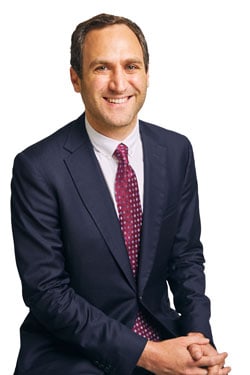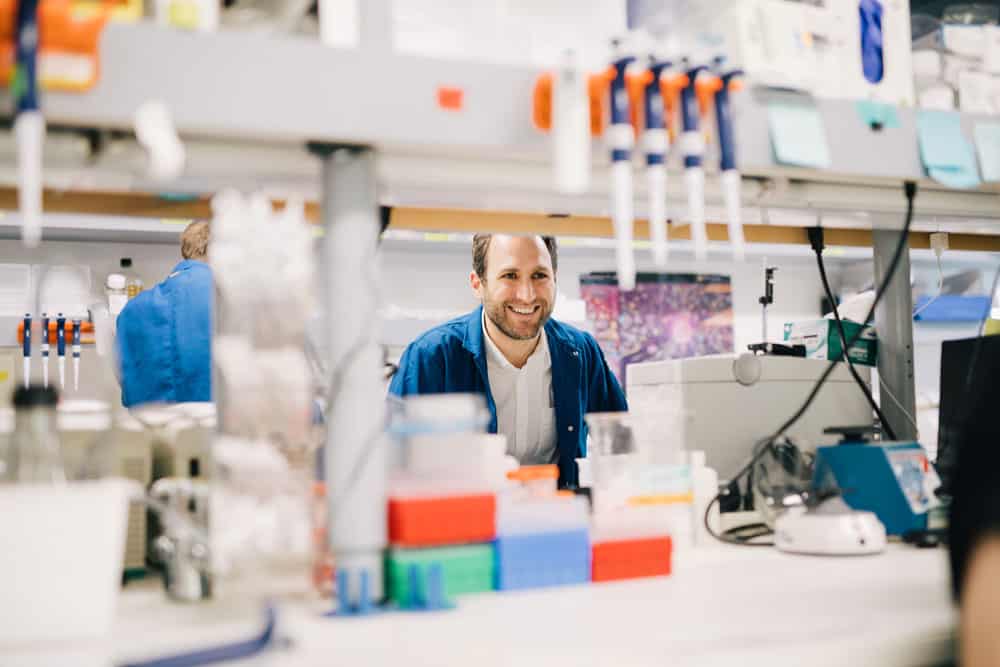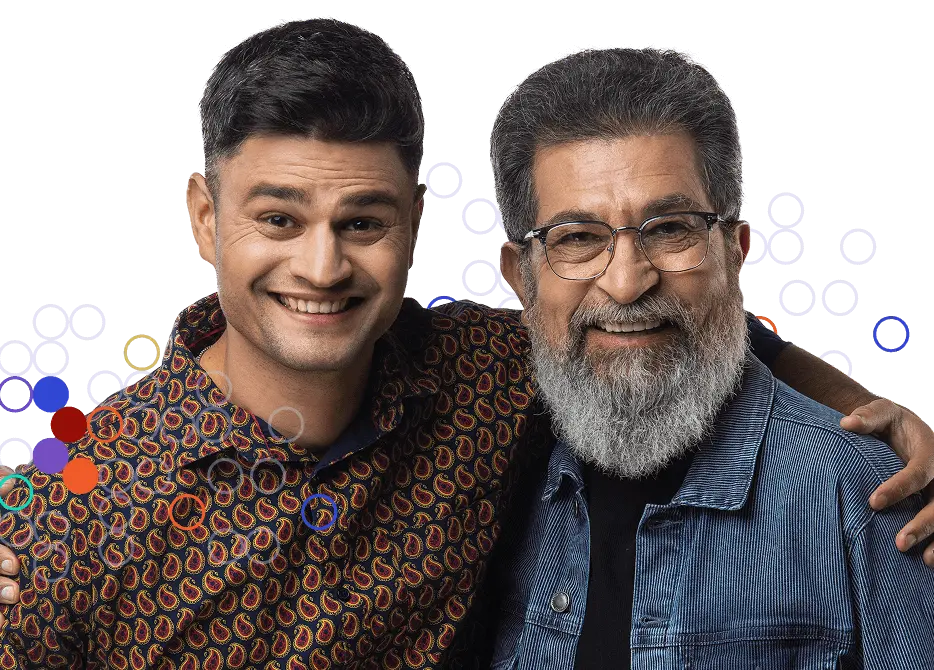Earlier this year, the Cancer Research Institute (CRI) launched its ambitious Lloyd J. Old STAR Program, named in honor of the “Father of Modern Tumor Immunology,” who served as CRI’s founding scientific and medical director from 1971 to 2011.
Old’s bold vision helped us build the foundation upon which immunotherapy has achieved its current success and helped transform how we think about treating cancer. Now, to bring cures to all patients, we’ll need to venture beyond what’s already known and push the boundaries of what’s currently possible with immunotherapy. This will require taking risks, and that’s exactly what these STARS—Scientists Taking Risks—will do.
With CRI support—each STAR will receive $1.25 million over the next 5 years—these promising STARs will be exploring high-risk, high-reward ideas with the potential to produce transformative leaps forward that will enable the field’s next great advances and bring us ever closer to a future immune to cancer.
One of these promising STARs is Alexander Marson, MD, PhD, of the University of California, San Francisco, who has contributed a number of important advances in the field of genome editing by helping to improve the biomedical applications of tools such as CRISPR that enable scientists to re-write the DNA of living cells.
 Currently, Dr. Marson is an associate professor of microbiology and immunology at the University of California, San Francisco (UCSF). He is also the scientific director of biomedicine at the Innovative Genomics Institute (IGI) and an investigator at the Chan Zuckerberg Biohub. Previously, Dr. Marson earned a PhD from the Whitehead Institute at the Massachusetts Institute of Technology (MIT), where he worked under Richard A. Young, PhD, and Rudolf Jaenisch, MD Additionally, Marson also earned an MD from Harvard Medical School and completed his medical residency at the Brigham and Women’s Hospital before coming to UCSF.
Currently, Dr. Marson is an associate professor of microbiology and immunology at the University of California, San Francisco (UCSF). He is also the scientific director of biomedicine at the Innovative Genomics Institute (IGI) and an investigator at the Chan Zuckerberg Biohub. Previously, Dr. Marson earned a PhD from the Whitehead Institute at the Massachusetts Institute of Technology (MIT), where he worked under Richard A. Young, PhD, and Rudolf Jaenisch, MD Additionally, Marson also earned an MD from Harvard Medical School and completed his medical residency at the Brigham and Women’s Hospital before coming to UCSF.
Recently, we spoke with Dr. Marson to learn more about his work and what he hopes to accomplish during the next five years as a CRI Lloyd J. Old STAR.
Arthur N. Brodsky, PhD:
Genome editing technologies, which allow individual genes to either be added or removed from a cell’s genetic code, have made a lot of advances of the past several years. Perhaps the most well-known of these tools is called CRISPR, and I understand that you were a part of some of the early work that focused on developing and refining this technology for research purposes. So, to begin, could you explain what CRISPR is and how it’s being used in biomedical research today?
Alexander Marson, MD, PhD:
CRISPR is a technology that has been developed as an incredibly powerful genome editing technology. I started my lab at the University of California, San Francisco (UCSF) in 2013, just shortly after a seminal paper by Jennifer Doudna and Emmanuelle Charpentier dropped a bombshell on the whole field of genetics. It showed that CRISPR was a system that could be used to edit, in a very targeted way, DNA sequences, and that really opened up people’s imaginations that this was, in some ways, the sequel to the human genome project—that we were moving into a new era where we were going to be able to not only read the human genome, but actually think about re-writing it in particular cells. Immediately following that paper, there was a rush of applications where people were using the CRISPR system in experimental cell models and animal models.
But what was not clear was whether or not this would also work as a flexible and efficient tool in human cells and serve as a therapy. That’s where my lab has put a lot of emphasis, developing powerful new tools to use CRISPR directly in human immune cells. Over the past couple of years we have made big strides, starting in collaboration with Jennifer Doudna’s lab, and then in collaboration with other groups. Our lab has been pushing the boundaries of how flexibly we can use CRISPR directly in human immune cells. Now, we can take human immune cells from the blood, sort out the cells we want, and then use a simple cut and paste CRISPR mechanism to start editing DNA sequences—aspects of the genetic code—that control the behavior of these important immune cells. And that means that we can start writing new genetic code directly into those human cells and think about programming human immune cells to be more effective at recognizing and treating cancer.
Arthur N. Brodsky, PhD:
The CRISPR system was first discovered in bacterial cells, and you discussed that there were a lot of challenges when it came to translating this to human cells. There were a lot of issues that you had to overcome to make the process more efficient and safer. Once you did, one of the first projects you tackled involved removing the natural T cell receptor that helps T cells recognize and eliminate cancer cells, and replacing it with a synthetic receptor that enabled the T cells to go after cancer cells that expressed a particular protein called NY-ESO-1. Then, you showed that these CRISPR-modified T cells could eliminate cancer in mice, which was a great proof of principle about how your approach can essentially create an immune response from scratch. In that light, could you speak more broadly to how these genome editing tools might be able to improve the effectiveness of cancer immunotherapy?
Alexander Marson, MD, PhD:
Yes, that’s exactly right. Human T cells are immune cells that can adapt against and target wide variety of threats. Each T cell only recognizes a single target, but together the billions of T cells in our bodies are designed to protect against an enormous diversity of different potential threats. However, for cancer immunotherapy, there might be gaps in what those receptors target, where there are not enough cells that can specifically recognize cancer cells in the body. So, what we’d like to be able to do is cut out these natural receptors that are in the genetic code of those cells and paste in one specific target so that the immune cells can search and destroy the cancer cells specifically. It was really a major engineering hurdle, because those receptors require cutting out and replacing a big amount of genetic code.
This was a technical hurdle for the field, but we were able to overcome that last year, and now we can paste in big pieces of DNA. Then, in collaboration with Dr. Antoni Ribas’ lab, we figured out a way to write the genetic code efficiently into human T cells with CRISPR. That meant that we were not just dropping the receptor code haphazardly into the genome. We are putting it precisely into the place that codes for the natural receptor. Actually, we’re cutting out that normal code and pasting in the one that will allow it to recognize a cancer target. And that is a flexible and powerful technology that we think will allow us to design immune cells that can recognize cancer cells more powerfully and more quickly and, we hope, more affordably than has previously been possible with other technologies.

Dr. Alexander Marson sitting in his laboratory at UCSF. Photo by Anastasiia Sapon.
Arthur N. Brodsky, PhD:
That’s amazing what you’ve been able to accomplish so far, and I think it provides a great foundation for the research that you will be doing as a CRI Lloyd J. Old STAR. Part of that work will involve strategies similar to what you discussed above, in terms of improving the way T cells see and target cancer cells. Could you elaborate on your approach in this regard?
Alexander Marson, MD, PhD:
Broadly, we think our technology will be very effective as the field discovers new T cell receptors and new chimeric antigen receptors, otherwise known as CARs. Our technology will provide a way to paste those receptors into cells rapidly in order to engineer T cells to target cancer precisely. We have put a lot more effort into thinking about how we can combine those targeting receptors with new pathways that we can manipulate. We are also thinking about new functions that we can supply to not only change what the T cells target, but also to make them more effective in clearing tumors. We think that that’s really going to be critical for adapting T cell therapies to solid organ cancers, where they are desperately needed.
Arthur N. Brodsky, PhD:
I want to follow up on that, because I think it’s very important and might not be clear to everyone. The different receptors you’ve discussed are how the T cells physically interact with tumor cells, how they recognize tumors and then know to eliminate them. That’s one requirement for successful immune responses against cancer, with or without immunotherapy, but just having T cells that recognize and target cancer cells isn’t always enough to eliminate cancer.
That’s because, as you just alluded to, tumors and their local environment can shut down T cells and prevent them from doing their job. To that end, a major focus of your work is to discover new pathways and genetic programs that control cell “states” so that you could then incorporate these programs into T cells to make them more effective in eliminating cancer. Can you discuss your plans to do this and some of the considerations that will drive your search?
Alexander Marson, MD, PhD:
Yeah. We know that tumors have a whole bunch of tricks that allow them to suppress the function of immune cells and evade the immune system. What we want to do is design immune cells that can fight back and overcome these tricks. To do that, we need to understand the genetic vulnerabilities of immune cells and be able to think about and discover the ways that we want to rewrite those programs to make them more effective in clearing tumors.
So, what we’ve been developing is a way to use CRISPR technology really as a Rosetta Stone to understand every aspect, every part of the genetic code that controls the behavior of human immune cells. What that means is really moving beyond just having the genetic sequence, into being able to test every part of that genetic code and see which parts are important for the function of the immune cells.
Last year we developed a way to take a human blood sample, take the immune cells from one person, and in one big experiment we can actually make a collection of cells where each cell is missing a different gene. Then we can test and see what are the consequences of every gene in the genome. There’s 20,000 genes and we could test all of the different genes at once and see which are important for certain behaviors of human immune cells. Which are the ones that will control whether the cells will divide as they find their targets? Which are the ones that determine whether a T cell is vulnerable to being shut down by the tumor environment? Now, we have a faster way of discovering all the genes that may be potential targets for drugs, or maybe a potential target for gene modification and cell therapy, and we’re applying this to find new targets for cancer immunotherapy.
Arthur N. Brodsky, PhD:
I think you described that complicated approach pretty well. Like you said, there are a lot of genes, and so many other aspects that influence the overall state of T cells and whether they’re going to be able to do their job of eliminating cancer. Could you elaborate more on how you’ve helped to speed up this comprehensive yet rapid testing process.
Alexander Marson, MD, PhD:
Basically, we’re developing tools that allow us to test huge numbers of different genetic operations in one big experiment. We’re not doing things one at a time, but we are testing things in parallel. We can actually start racing the cells with different genetic modifications against each other and see which ones have the best performance when it comes to different metrics that are important for how they will be able to fight cancer.
The speed at which we can discover new genetic programs and then write into human immune cells is faster than we could have ever conceived, and this makes us very optimistic that we will be able to enhance T cell-based therapies to treat more patients in the future. So, that’s the mission and really the core objective of the work that’s going to be funded by the CRI STAR grant.

Dr. Alexander Marson in his laboratory at UCSF. Photo by Anastasiia Sapon.
Arthur N. Brodsky, PhD:
Up to this point, we’ve mainly focused on T cells, which are one of the most powerful immune cells in the human body. Perhaps deservedly, they’ve been getting a lot of the attention in cancer immunotherapy recently, but there are also other immune cell types that are starting to become more appreciated for their roles in enabling successful immune responses against tumors. Could the technologies and strategies you’re employing to improve the activity of T cells also potentially be used with these other types of immune cells as well?
Alexander Marson, MD, PhD:
Sure. As you said, T cells are incredibly powerful agents of cancer immunotherapy, and we’re seeing successes there. There are many reasons to focus our efforts on T cells, and that’s what we’re doing. These technologies are not limited to T cells, and we are interested in how other cells of the immune system can also be genetically engineered and harnessed. Now, we’re actively adapting these technologies and starting to see successes with other immune cells. Additionally, in the future I think there may be ways to think about engineering other cells or combinations of cells to enhance the power of next generation cancer immunotherapies. You can move beyond the T cells that are the basis for our current successes.
Arthur N. Brodsky, PhD:
Before we wrap up, I want to give you a chance to leave us with your overall vision for your work. I know we’ve discussed a lot of the different parts, but in the grand scheme what do you think you’ll be able to accomplish over the next five years, and how do you hope that your work will impact the cancer treatment landscape?
Alexander Marson, MD, PhD:
We have been enormously inspired by the successes in immunotherapy, many of which have been funded by the Cancer Research Institute. We are now seeing previously incurable forms of cancer responding to treatment. Sometimes they’re completely eliminated. Our hope is that we will contribute to the development of the next generation of cell therapies in order to tackle the cancers that remain incurable. To do that, we are developing new technologies by leveraging advances in the genetic engineering field and combining them with the cell therapy field.
What we really want to do is be able to build on our successes so that it becomes easier and faster to make precise, targeted changes in the genome and the genetic code of human immune cells. At the same time, we want to accelerate our ability to decipher that genetic language so that we can understand how every aspect of that genetic code controls the behavior of cells. Then we can start writing new code and installing it into human immune cells to tune their function and make them better at finding cancer and eliminating tumors.

